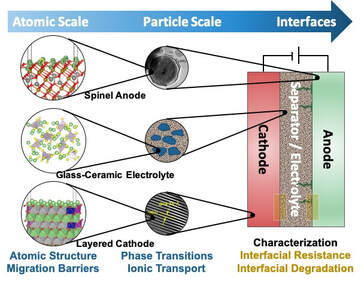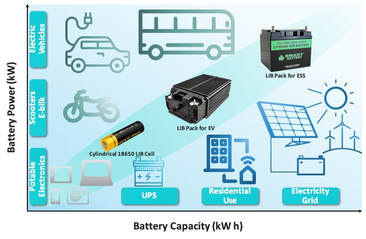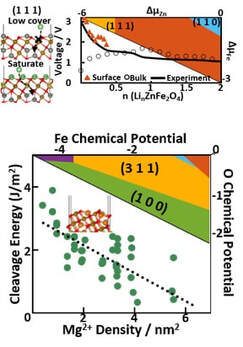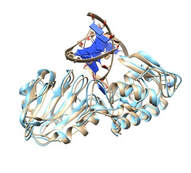Research
Interests:
- Plasma
- Surface Processing
- Density Functional Theory
- Machine Learning
- Heterogeneous Catalysis
- Solid State Batteries
Theoretical Modeling of Catalysts with Density Functional Theory, Transition State Theory and Kinetic Monte Carlo Methods
Objectives:
- Pursue microscopic understanding of reaction mechanisms and active sites for complex catalysis
- Enable the discovery of advanced catalysts
Atomic-Scale Modeling of Solid-State Battery Materials by Combining Density Functional Theory and Machine Learning Method

Objectives:
- Gain fundamental understanding of current materials limits and identify key materials parameters for optimizing the performance of solid state batteries (SSBs);
- Determine structure-property relationships of the heterostructural solid-state interfaces (SSIs) in SSBs systems by corroborating atomic scale theory with experiment
- Reviewed recent methodological advancements of machine learning techniques for atomic-scale modeling and materials design, and their applications to materials for solid-state batteries (Front. Energy Res.)
- Completed the phase diagram of glass/ceramic Li2S–P2S5 (gc-LPS) with varying compositions by combining DFT, ANN potentials, GA sampling, and AIMD; Mapped the structure-stability-conductivity relationship
- Established an automated workflow for XAS simulations with XCH approach; Generated a database with more than 5,000 S K-edge XAS spectra for more than 100 crystalline and amorphous structures
First Principles Study of Electrode Materials in Lithium-Ion Batterie

- The high energy efficiency of lithium-ion batteries allows various applications in portable electronics and electric vehicles. Extensive research has been devoted to the electrode materials aiming to design the electrodes with high power and capacity. The improvement of materials in terms of cost and performance is hindered by the lack of fundamental understanding on discharge/charge mechanisms. Here, Density Functional Theory (DFT) calculations are performed to tackle the challenges.

Objectives:
- Gain better understanding on structures, mechanisms and optimal sites for rate performance, which were synthesized and characterized experimentally;
- Identify key descriptors that control the rate performance, capacity and durability;
- Optimize material at a theoretical level based on key descriptors.
- Investigated lithiation mechanisms of spinel AFe2O4 (A = Zn, Mg, Cu) at atomic level and identified the key descriptors that control the rate performance and cyclability based on the bulk and surface/interface calculations (Chem. Mater., Phys. Chem. Chem. Phys., ACS Appli. Mater. Interfaces, Adv. Mater. Interfaces, J. Electrochem. Soc., Phys. Chem. Chem. Phys.)
- Investigated doping effects on 1) electronic structures and electrochemical properties of Ca, Nb, F-doped spinel Li4Ti5O12 (Chem. Mater., Chem. Eur. J.) 2) surface stability and morphology of V-doped hollandite α-MnO2
- Conducted STEM image simulation and spectroscopy simulation to facilitate the understanding of experimental observations
Computational Modeling of DNA-Protein Interaction

DNA oxidization is one of the deleterious mutations in organisms, and 8-oxoguanine (8-oxoG) is the most common DNA lesions product. Since the mutation is detrimental, most organisms have enzymes that can target and repair it. The formamidopyrimidine-DNA glycosylase (Fpg) protein is one of the 8-oxoG repair protein. The crystal structures of Fpg-DNA complex have been extensively studied in previous research. However, the mechanisms of recognition 8-oxoG by Fpg protein still remains unclear due to the complex dynamics processes.
Hereby, we conducted molecular dynamics (MD) simulations on Fpg protein, implementing TIP3P explicit solvent model. During the simulations, a conformational variation of active sites in Fpg protein was observed; meanwhile, the hydrogen bonds were broken between the protein and lesion DNA, indicating that there are a series of conformation changes of Fpg protein in the recognition of 8-oxoG, and eventually the Fpg-DNA complex was formed in an energetic preferred pathway. (Thesis)
Hereby, we conducted molecular dynamics (MD) simulations on Fpg protein, implementing TIP3P explicit solvent model. During the simulations, a conformational variation of active sites in Fpg protein was observed; meanwhile, the hydrogen bonds were broken between the protein and lesion DNA, indicating that there are a series of conformation changes of Fpg protein in the recognition of 8-oxoG, and eventually the Fpg-DNA complex was formed in an energetic preferred pathway. (Thesis)
Nano Wave-Absorption Compound Materials

1. White‐fungus‐like NiSx microspheres were synthesized on a large scale implementing a simple hydrothermal method. The influence of the reaction time and the surfactant on the final products was investigated, with the formation mechanism discussed. The synthesized white‐fungus‐like NiSx microspheres were used firstly as fillers in the fabrication of NiSx/polyvinylidene fluoride (PVDF) composites. Relationships between the loadings of the NiSx and wave‐absorption properties of the composites were analyzed, with the mechanism demonstrated. (ChemPlusChem)
2. Bi2S3 nanorods were synthesized on a large scale through a simple hydrothermal method at low temperature. To investigate the wave‐absorption properties of Bi2S3 nanorods, the homogeneous nanocomposites consisting of the nanorods and paraffin or PVDF matrix were fabricated and characterized. The results indicated that the introduction of Bi2S3 nanorods to PVDF significantly enhanced the wave‐absorption properties of the absorber. The loss mechanism of Bi2S3/PVDF nanocomposites with different loadings was discussed and theories were employed to explain the mechanism of the enhancement based on the experimental results. (ChemPlusChem)
3. CoxSy nanorods were synthesized via a simple hydrothermal method, utilizing ethanediamine (EDTA). By mixing CoxSy porous nanorod with PVDF, a composite material was prepared. The wave absorbing, dielectric and mechanical properties of the composite material were measured and analyzed. The composite material showed outstanding wave absorption properties under the frequency range of 2– 18 GHz. In a loading of as low as 5 wt%, the reflection loss of the composite material can reach – 45 dB, and the band is relatively wide. The mechanism of the wave absorption enhancement properties was discussed. (Graduation Thesis)
2. Bi2S3 nanorods were synthesized on a large scale through a simple hydrothermal method at low temperature. To investigate the wave‐absorption properties of Bi2S3 nanorods, the homogeneous nanocomposites consisting of the nanorods and paraffin or PVDF matrix were fabricated and characterized. The results indicated that the introduction of Bi2S3 nanorods to PVDF significantly enhanced the wave‐absorption properties of the absorber. The loss mechanism of Bi2S3/PVDF nanocomposites with different loadings was discussed and theories were employed to explain the mechanism of the enhancement based on the experimental results. (ChemPlusChem)
3. CoxSy nanorods were synthesized via a simple hydrothermal method, utilizing ethanediamine (EDTA). By mixing CoxSy porous nanorod with PVDF, a composite material was prepared. The wave absorbing, dielectric and mechanical properties of the composite material were measured and analyzed. The composite material showed outstanding wave absorption properties under the frequency range of 2– 18 GHz. In a loading of as low as 5 wt%, the reflection loss of the composite material can reach – 45 dB, and the band is relatively wide. The mechanism of the wave absorption enhancement properties was discussed. (Graduation Thesis)
Publications
- Haoyue Guo, Matthew R. Carbone, Chuntian Cao, Jianzhou Qu, Yonghua Du, Seong-Min Bak, Conan Weiland, Feng Wang, Shinjae Yoo, Nongnuch Artrith, Alexander Urban, Deyu Lu. “Simulated Sulfur K-Edge X-Ray Absorption Spectroscopy Database of Lithium Thiophosphate Solid Electrolytes.” Scientific Data 10.1 (2023): 349.
- Shengbo Zhang, Qikun Hu, Yu-Xiao Zhang, Haoyue Guo, Yanfen Wu, Mingze Sun, Xingsong Zhu, Jiangang Zhang, Shuyan Gong, Ping Liu, Zhiqiang Niu. “Depolymerization of Polyesters by a Binuclear Catalyst for Plastic Recycling.” Nature Sustainability (2023): 1-9.
- Haoyue Guo, Zhenhua Xie, Xuelong Wang, Jingguang G. Chen, Ping Liu. “Descriptor-based Identification of Bimetallic-derived Catalysts for Selective Activation of Ethane with CO2.” EES Catalysis 1.1 (2023): 17-25. (Selected Inside Front Cover)
- Haoyue Guo, Qian Wang, Alexander Urban, Nongnuch Artrith. "Artificial Intelligence -Aided Mapping of the Structure-Composition-Conductivity Relationships of Glass-Ceramic Lithium Thiophosphate Electrolytes." Chemistry of Materials 34.15 (2022): 6702-6712.
- Zhenhua Xie,* Haoyue Guo,* Erwei Huang, Zhongtian Mao, Xiaobo Chen, Ping Liu, Jingguang G. Chen. "Catalytic Tandem CO2-Ethane Reactions and Hydroformylation for C3 Oxygenate Production." ACS Catalysis 12.14 (2022): 8279-8290.
- Zhongtian Mao,* Haoyue Guo,* Zhenhua Xie, Ping Liu, Jingguang G. Chen. "Trends and Descriptors of Heterogeneous Hydroformylation Activity and Selectivity of RhM3 (M= Fe, Co Ni, Cu and Zn) Catalysts." Catalysis Science & Technology 12.16 (2022): 4988-4992.
- Xinhao Li, Qian Wang, Haoyue Guo, Nongnuch Artrith, Alexander Urban. "Understanding the Onset of Surface Degradation in LiNiO2 Cathodes." ACS Applied Energy Materials 5.5 (2022): 5730-5741.
- Haoyue Guo, Qian Wang, Annika Stuke, Alexander Urban, Nongnuch Artrith. "Accelerated Atomistic Modeling of Solid-State Battery Materials with Machine Learning." Frontiers in Energy Research 9 (2021): 695902.
- David C. Bock, Killian R. Tallman, Haoyue Guo, Calvin Quilty, Shan Yan, Paul F. Smith, Bingjie Zhang, Diana M. Lutz, Alison H. McCarthy, Matthew M. Huie, Veronica Burnett, Andrea M. Bruck, Amy C. Marschilok, Esther S. Takeuchi, Ping Liu, Kenneth J. Takeuchi. "(De)lithiation of Spinel Ferrites Fe3O4, MgFe2O4, and ZnFe2O4: A Combined Spectroscopic, Diffraction and Theory Study." Physical Chemistry Chemical Physics 22.45 (2020): 26200-26215.
- Kenna L. Salvatore, Diana M. Lutz, Haoyue Guo, Shiyu Yue, Joceline Gan, Xiao Tong, Ping Liu, Esther S. Takeuchi, Kenneth J. Takeuchi, Amy C. Marschilok, Stanislaus S. Wong. "Solution-Based, Anion-Doping of Li4Ti5O12 Nanoflowers for Lithium-Ion Battery Applications." Chemistry – A European Journal 26.42 (2020): 9389-9402.
- Haoyue Guo, Jessica L. Durham, Alexander B. Brady, Amy C. Marschilok, Kenneth J. Takeuchi, Esther S. Takeuchi, Ping Liu."Essential Role of Spinel MgFe2O4 Surfaces during Discharge." Journal of The Electrochemical Society 167.9 (2020): 090506. (JES Focus Issue on Battery Safety, Reliability and Mitigation)
- Haoyue Guo, Amy C. Marschilok, Kenneth J. Takeuchi, Esther S. Takeuchi, Ping Liu. "Rationalization of Diversity in Spinel MgFe2O4 Surfaces." Advanced Materials Interfaces 6.22 (2019): 1901218. (Back Cover)
- Haoyue Guo, Amy C. Marschilok, Kenneth J. Takeuchi, Esther S. Takeuchi, Ping Liu. "Essential Role of Spinel ZnFe2O4 Surfaces during Lithiation." ACS Applied Materials & Interfaces 10.41 (2018): 35623-35630.
- Lei Wang, Yiman Zhang, Haoyue Guo, Jing Li, Eric A. Stach, Xiao Tong, Esther S. Takeuchi, Kenneth J. Takeuchi, Ping Liu, Amy C. Marschilok, Stanislaus S. Wong. "Structural and Electrochemical Characteristics of Ca-Doped "Flower-like" Li4Ti5O12 Motifs as High-Rate Anode Materials for Lithium-Ion Batteries." Chemistry of Materials 30.3 (2018): 671-684.
- Haoyue Guo, Yiman Zhang, Amy C. Marschilok, Kenneth J. Takeuchi, Esther S. Takeuchi, Ping Liu. "A First principles Study of Spinel ZnFe2O4 for Electrode Materials in Lithium-Ion Batteries." Physical Chemistry Chemical Physics 19.38 (2017): 26322-26329.
- Yiman Zhang, Christopher J. Pelliccione, Alexander B. Brady, Haoyue Guo, Paul F. Smith, Ping Liu, Amy C. Marschilok, Kenneth J. Takeuchi, Esther S. Takeuchi. "Probing the Li Insertion Mechanism of ZnFe2O4 in Li-Ion Batteries: A Combined X-Ray Diffraction, Extended X-Ray Absorption Fine Structure, and Density Functional Theory Study." Chemistry of Materials 29.10 (2017): 4282-4292.
- Xin Luo, Guang-Sheng Wang, Hao-Yue Guo, Xiao-Juan Zhang, Wen-Qiang Cao, Yun-Zhao Wei, Lin Guo, Mao-Sheng Cao. "Enhanced Wave-Absorption Properties of Nanocomposites Based on the Synthesized Bi2S3 Nanorods and Polyvinylidene Fluoride." ChemPlusChem 79.8 (2014): 1089-1095.
- Shuai He, Chang Lu, Guang-Sheng Wang, Jia-Wei Wang, Hao-Yue Guo, Lin Guo. "Synthesis and Growth Mechanism of White-Fungus-Like Nickel Sulfide Microspheres, and Their Application in Polymer Composites with Enhanced Microwave-Absorption Properties." ChemPlusChem 79.4 (2014): 569-576.
HaoYue Guo
haoyue1619@gmail.com
中文 English Español Français 日本語
{footer}